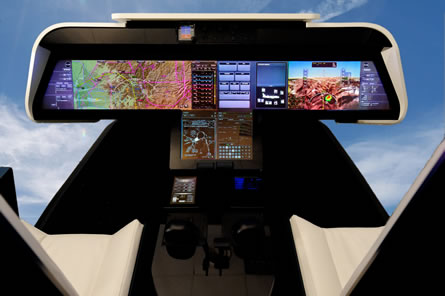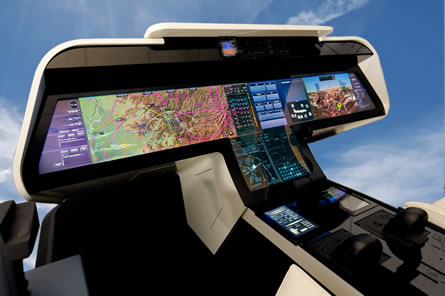The primary flight display in Thales's vision of the future flightdeck is a broad screen showing a blue-sky synthetic vision of the real outside world, but with the instrumentation overlaying it. If the pilot looks up, provided it is cloudless and daytime, he or she sees the same view, but in reality and without the flight instrument information.
 |
|---|
Thales © |
In instrument meteorological conditions or nighttime, the ideal, said Thales, would be to have the same instrumented view, but heads up, with the real world through it when visibility improves.
The advantages are that the pilots are fully orientated and terrain-aware while simultaneously monitoring the aircraft's performance and navigation. With the synthetic terrain and sky in sight at all times, the chances of becoming disorientated during bad weather or night flying on instruments is reduced to almost nothing. As Thales says, it is "designed to capitalise on human strengths and avoid triggering human weaknesses".
In a bad flightdeck, said Thales, the crew can become a "bottleneck" when workload is high, but this need not be so if the information the pilots need is supplied in a readily absorbed, intuitive way.
 |
|---|
Thales © |
In the Thales vision, the future instrument panel would be touchscreen configurable, rather like an Apple iPhone. Pilots could call up 3-D schematic graphics of aircraft systems that have a problem. Thales likes the iPhone/iPad parallel, pointing out that the user does not have to know how the interface works to use it deftly and successfully.
- All the latest news, images and video from the 2011 Paris air show
Source: Flight Daily News



















